Well it’s been a minute since I posted the Cold Oil Infusion blog post! So much has happened since then that I had to go look through my drafts to remember what the next installment in our infusions series was supposed to be! Ironically you’ve had to wait several weeks for this method of infusing oil that is super quick–Hot Oil Infusions!
Now look, cold oil infusions are generally the preferred way to impart gorgeous plant power into your oils, and I personally prefer it because all I have to do is set a jar up and let the rest of the work be future-me’s problem. If you want to read about that process you can do that here, but if you want the reader’s digest version (and who doesn’t?), it basically involves putting dried botanicals or other plant material with oils in a jar for several weeks, straining it, and enjoying the fruits of your very minimal labor.
Engaged laziness is the key to cold oil infusions and, trust me, I am all about that life. The only downside is that the infusions take FOREVER. Sometimes you just don’t have time to wait 4-6 weeks and you need that ish now! Sometimes you did wait 4-6 weeks but right before you were going to use your infused oil, you happened to knock it over, and that jar of calendula infused jojoba oil broke into 10,000 pieces in your work room right before a Facebook live. Specific, but topical, because that exact thing did, in fact, happen to me and I found myself in need of some good good oil on the fly!
Well, move over Jason Momoa, it’s time to introduce Hot Oil Infusions. Bow chicka wow wow.
A hot oil infusion is going to follow all the same basic rules of a cold oil infusion, so make sure you check this post out if you don’t know what I’m talking about! One fun exception with hot oil infusions is that you can occasionally get away with using FRESH herbs, as I did when I made rosemary infused mango butter for patreon! There are some pretty specific ways to do that though, and this post won’t go into that process, although we will cover hard butter infusions with dried herbs in the future.
For today though, we need a jar of calendula infused oil STAT! The easiest way to do this, in my opinion, is to use a crock pot as a double boiler, but you could also use a literal double boiler if you want! I like crock pots because they make it easier for me to monitor the water level, they keep the temps nice and low, and they don’t take up a ton of room.
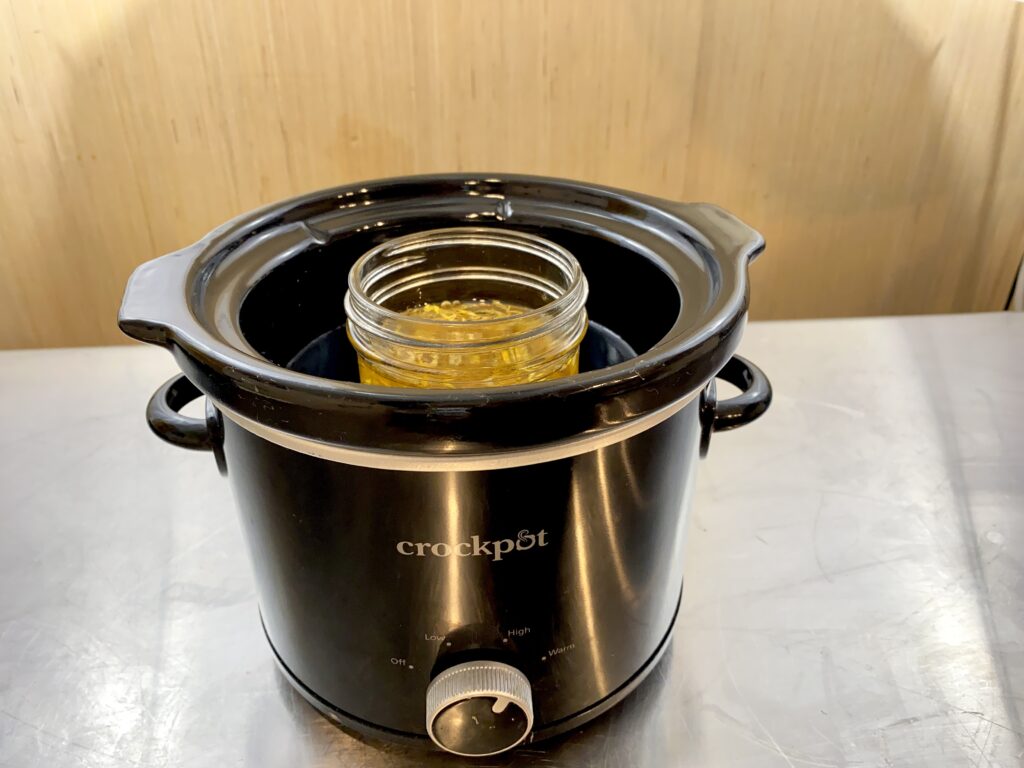
Where cold oil infusions will sit for weeks on end slowly extracting the plant constituents, the hot oil method can achieve this in a matter of hours. It’s especially good for roots and barks, dense herbs, or tougher materials, but you can certainly still use this method for botanicals!
You’ll want to keep the temperature around 100F/38C for the majority of the time your herb is infusing. A little variance is fine, but you definitely don’t want to cook the herb (trust me, I’ve accidentally done that and the smell was mouth-watering and gross at the same time. lol). The lowest amount of time I’ve seen someone suggest infusing an oil was for 2 hours, but I’ve done hot oil infusions over the course of 3-4 days before. Sure, it’s several days of monitoring the water level and temp, but it’s still shorter than 4-6 weeks. With a floral infusion like this, we won’t need to extend it for days, but I would still infuse it for several hours.
The thing is, there is a ton of overthinking you can do on this, but the best way to infuse oils is to just give it a shot! You’ll learn something new from each batch you make. Sure there will be some mistakes, maybe even a few dropped jars, but you’ll be able to expand your knowledge and really be able to customize products, so it’s absolutely worth the effort in my opinion!
Ok! Enough chit chat! Let’s get cracking!
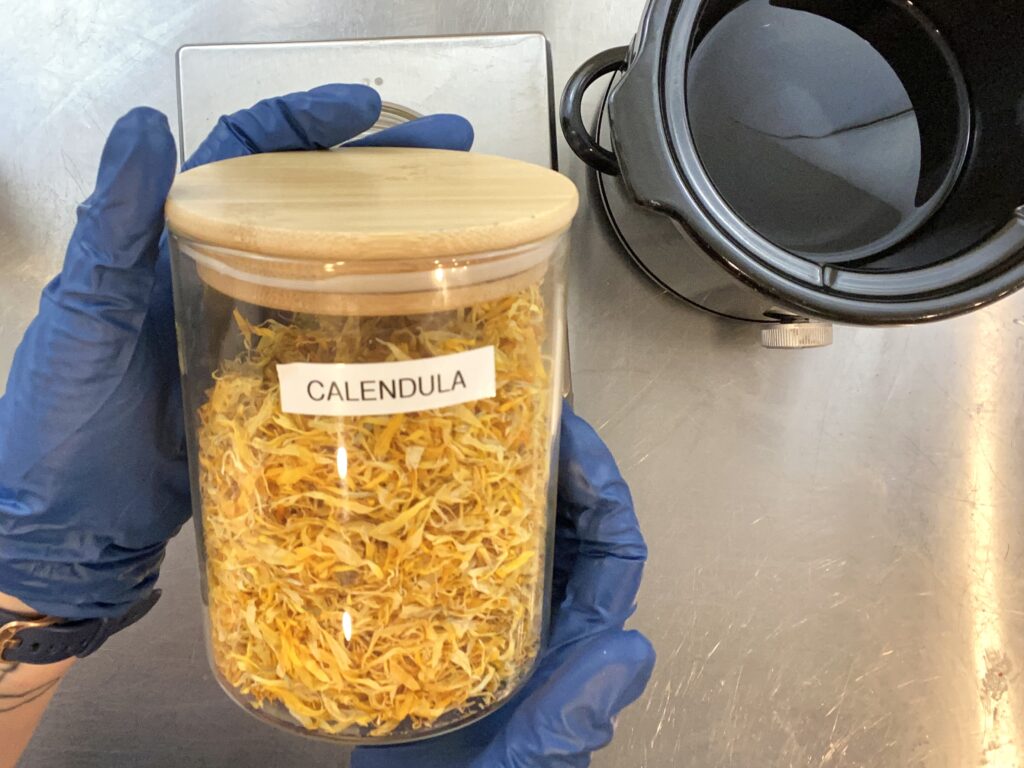
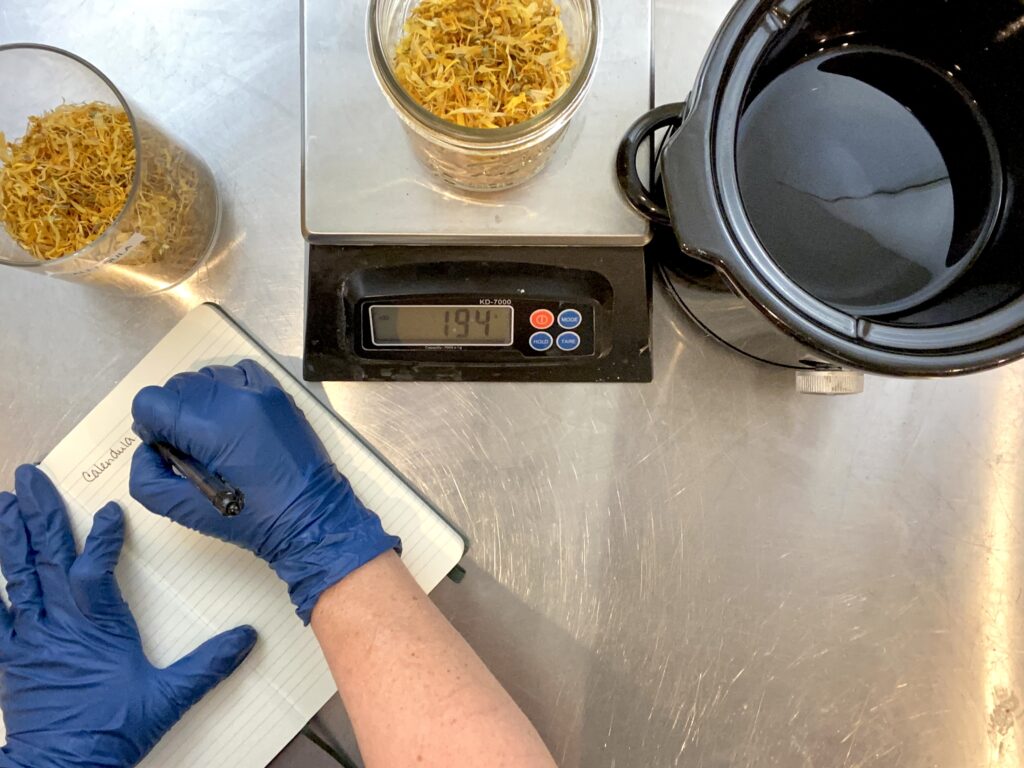
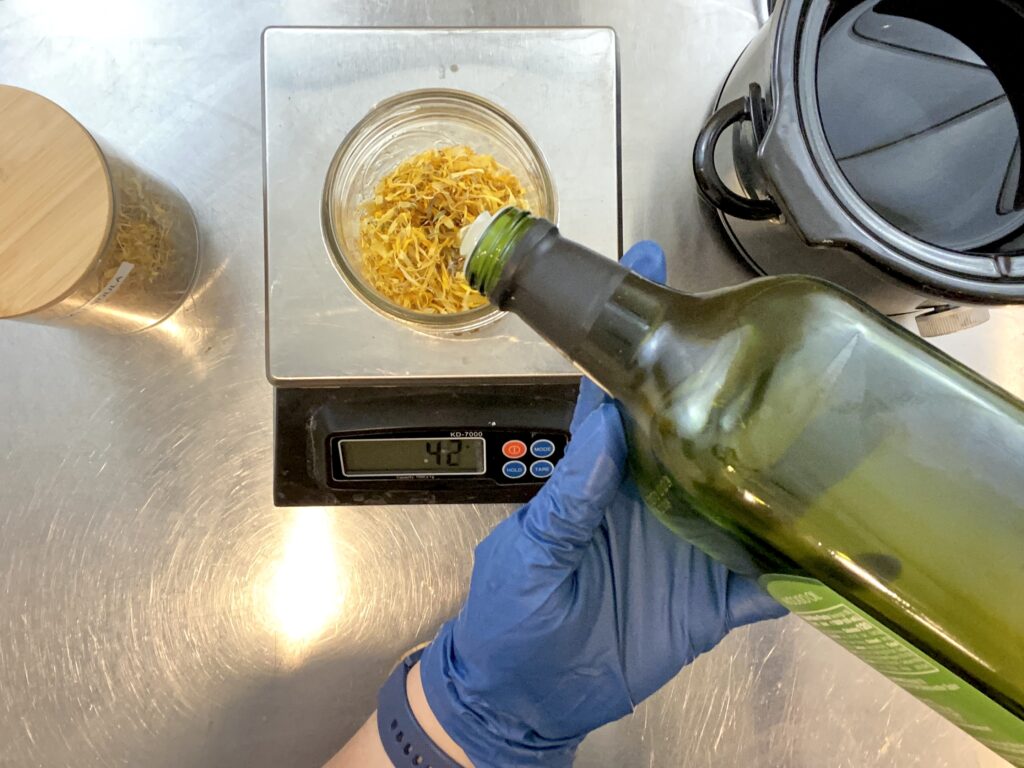
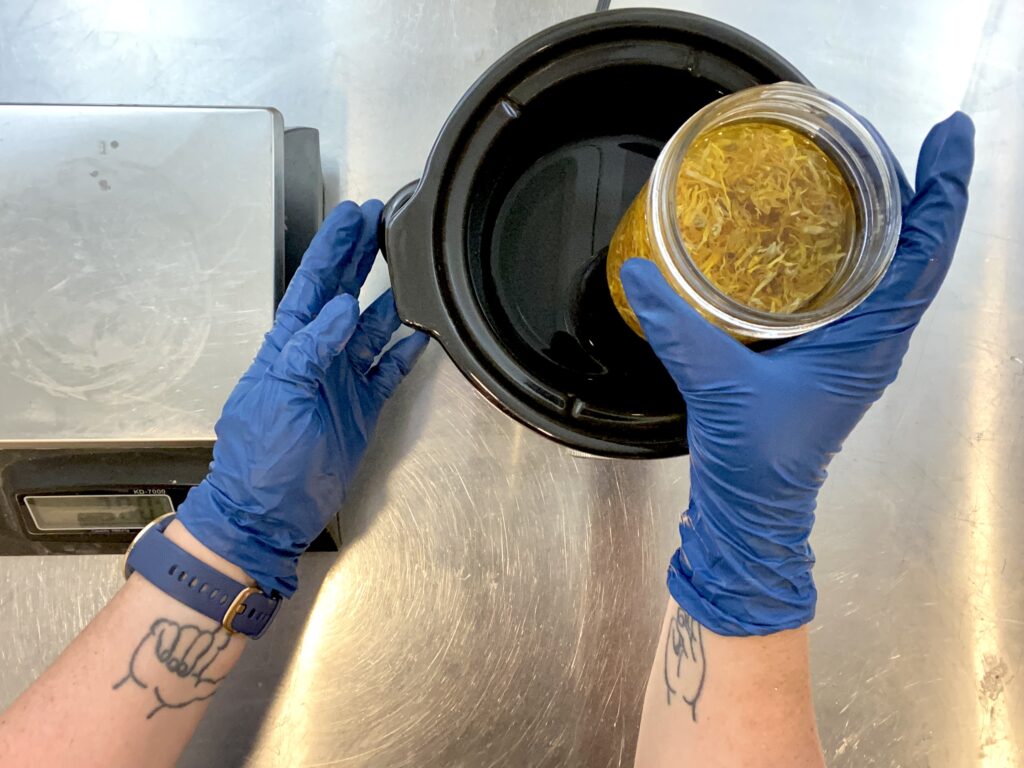
I started by placing calendula petals into a mason jar. While the true Folk Method we are drawing from is traditionally done using visual cues, I want to be able to replicate this oil in the future, so I made sure to measure everything as I added it. I used 8 grams of petals in a clean glass jar.
To that I added 325 grams of avocado oil! The jar I broke used jojoba oil, but avocado is also a nice replacement! It’s high in vitamin E and has a long shelf life. We use this versatile oil in a lot of our diy bath and body recipes, so I know I’ll find some good uses for it!
After that I set it into a crock pot with some water inside. I set the crock pot to high until the temperature got where I wanted it, then I reduced the heat to the warm setting.
If you’re using dried herbs, you can cover the jar with cling wrap (or a lid) to keep the delicate plant constituents from evaporating, but I left mine uncovered while it infused.
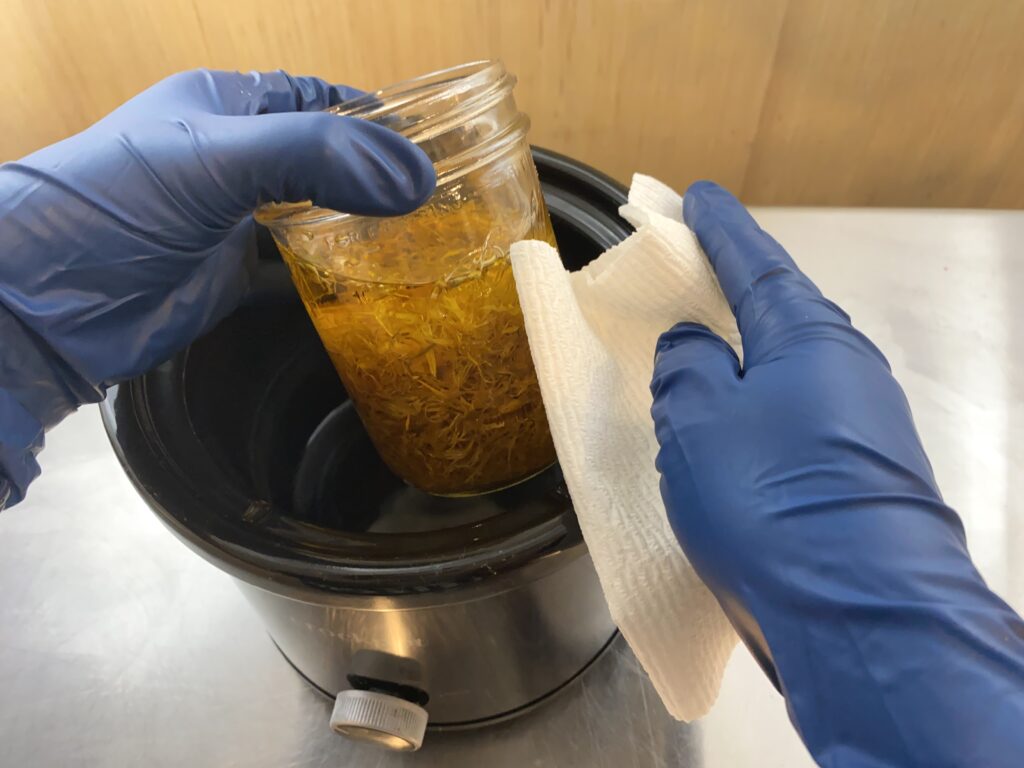
After 6 hours I pulled the oil from the crock pot and carefully wiped the water from the outside of the jar, then let the infusion cool down before straining it so I didn’t burn my hands!
When the oil had cooled off, I placed a cheesecloth over the opening of another clean jar and strained the flower petals from the oil. You can also use a sieve to hold the cheesecloth in place if needed. If you find that there are little bits of plant matter left over then don’t hesitate to do an extra round of straining. Feel free to let the cheesecloth drip the oil slowly, or squeeze it to get every last drop!
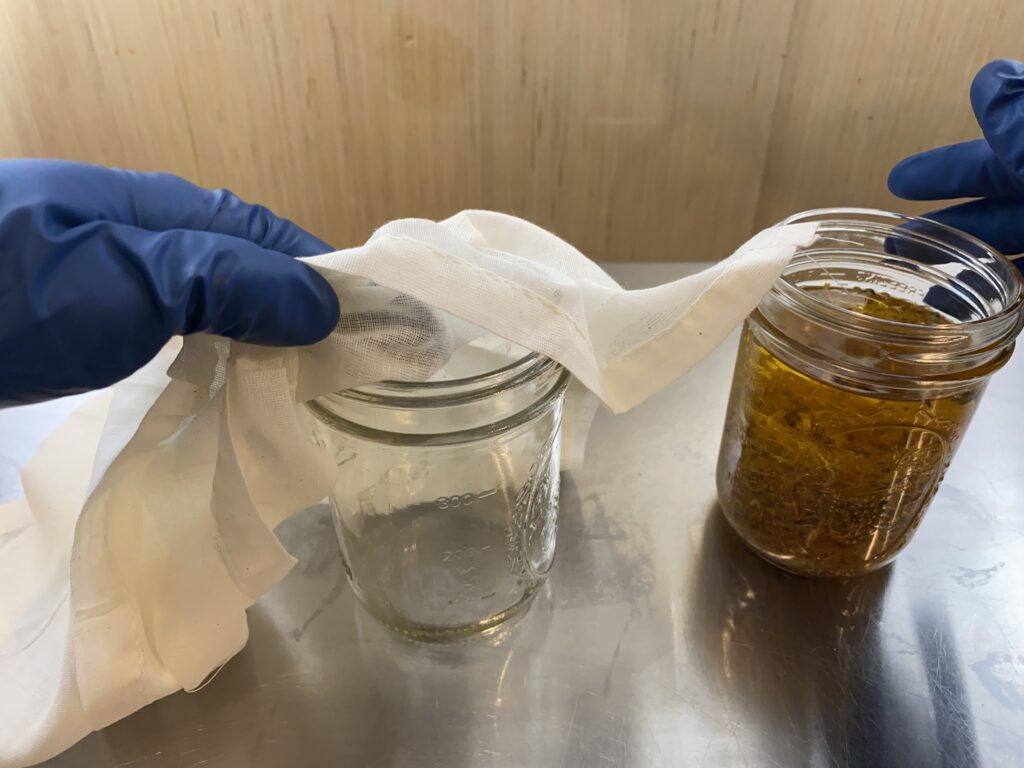
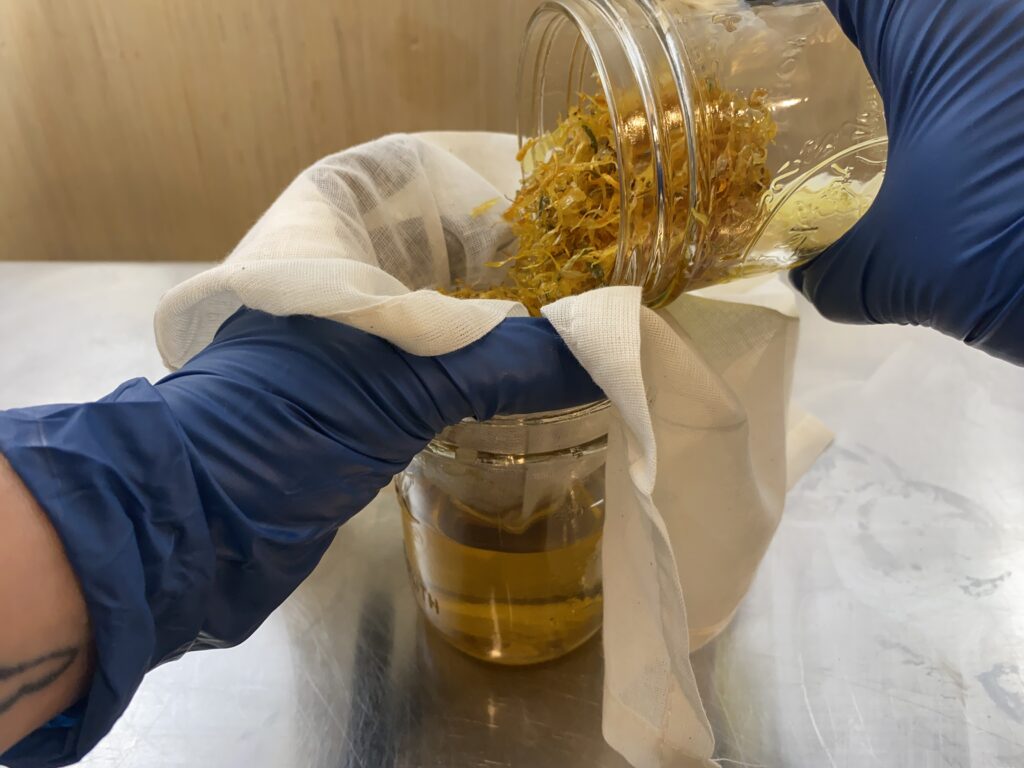
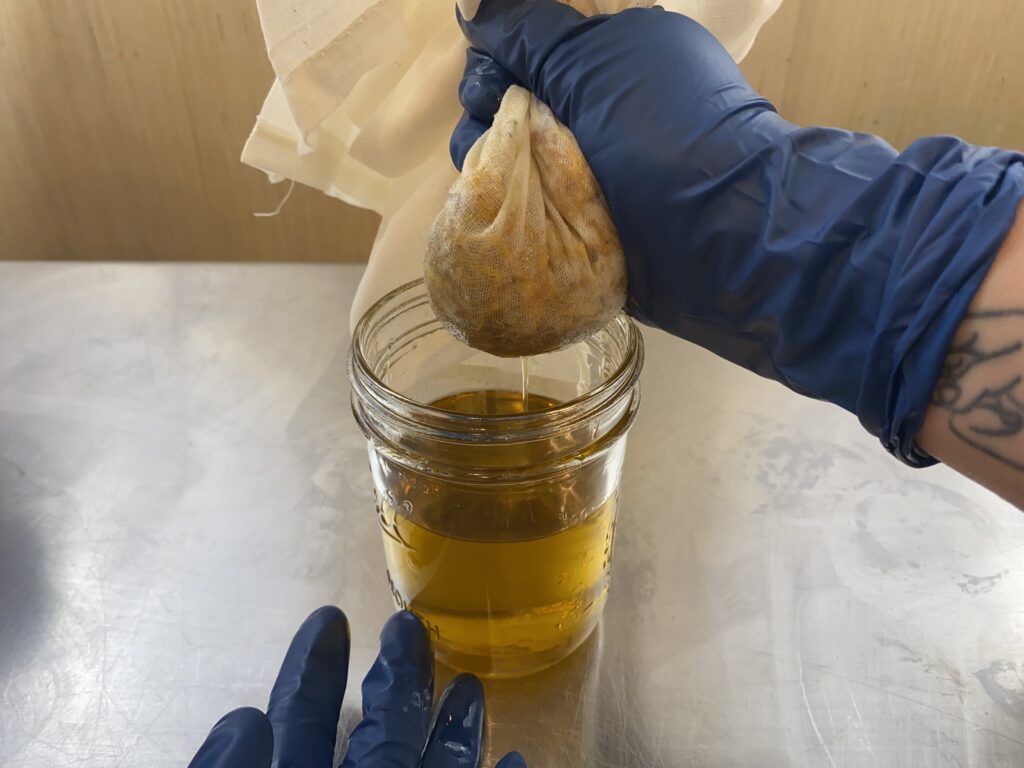
I placed a clean lid on the jar, then made sure to labeled my oil. While I have the infusion information in my green book, I don’t like having to flip around looking for expiry dates, so I like to add it to the outside of the jar!
I’ll store this oil on a cool dark shelf and ideally use it within six months–although my infused oils generally get used much quicker than that!
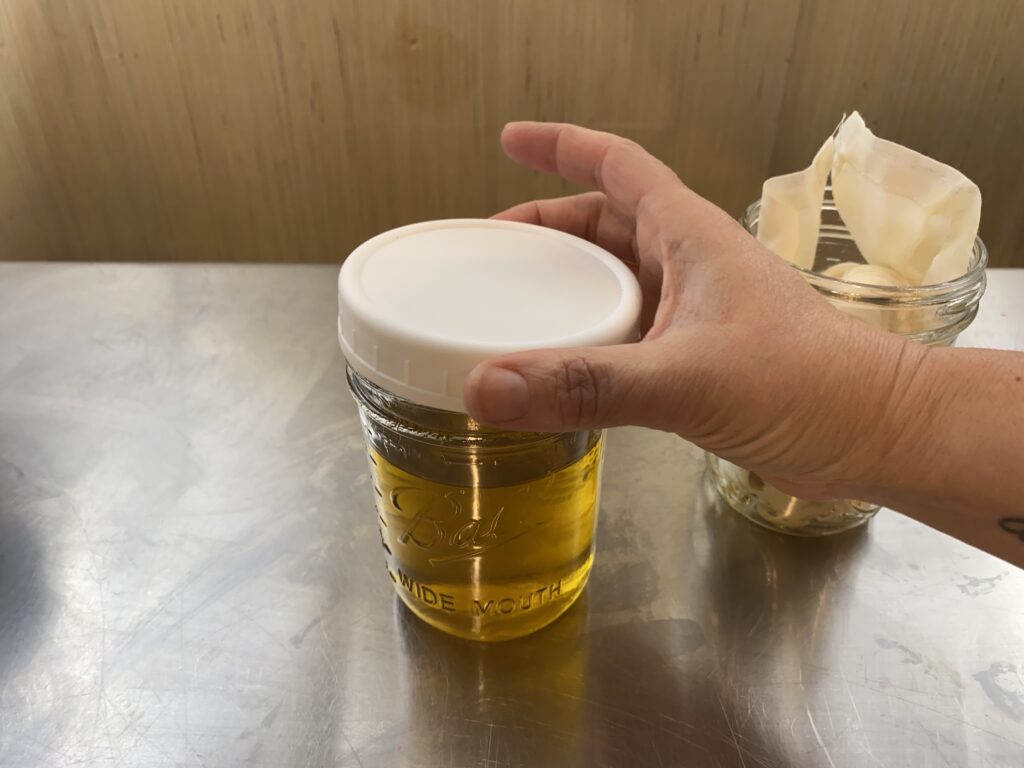
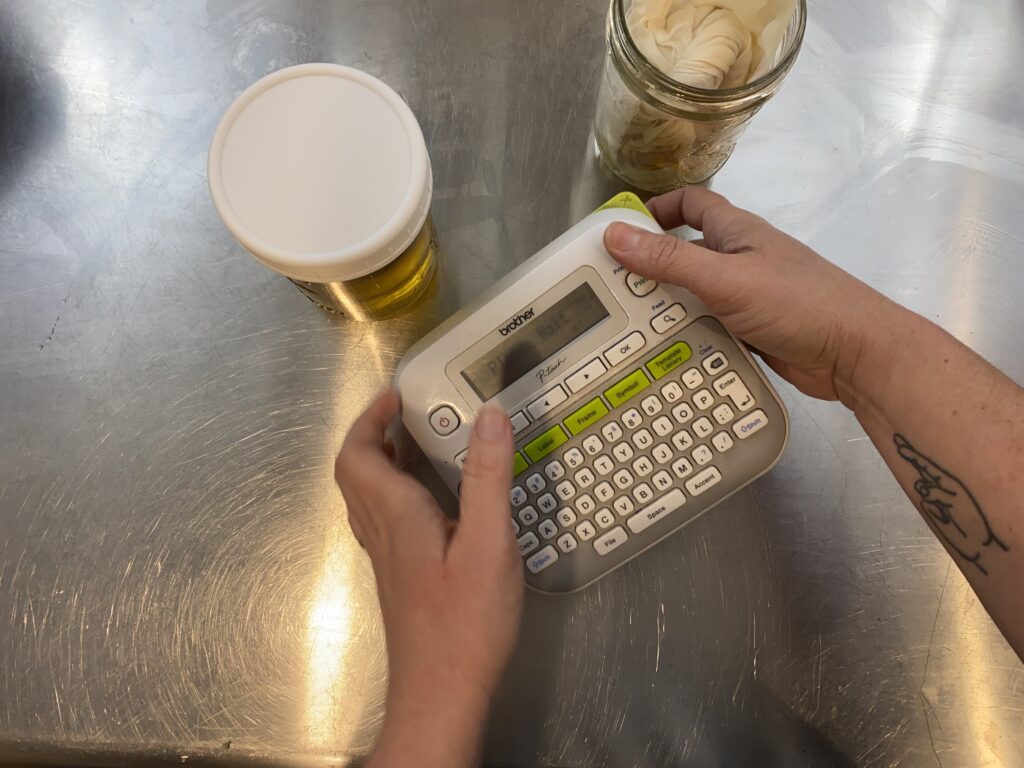
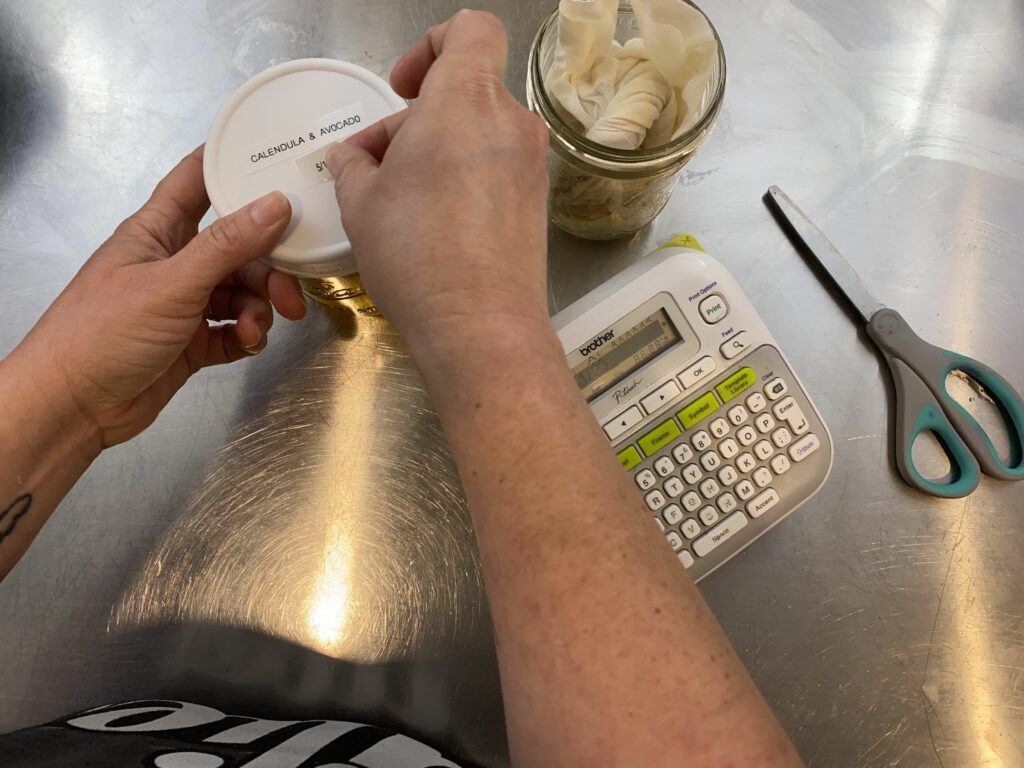
Since we just released our brand new Lip Balm, Glosses and Salves Recipes + Process Guide I decided to use some of this calendula infused oil in a lip balm!
My younger son always seems to have dry, chapped lips. I’m sure part of the problem is that he needs to drink more water, but because lips don’t have sweat glands, they lose moisture much quicker than other parts of out skin. Using lip balms, and other ointments to help condition and protect them is also a great option. Calendula has a long history of being used to soothe and heal skin and it makes a fantastic addition to any balm, but I especially love it in lip balms! Have you ever tried infused oils in your balms? Let us know in the comments!
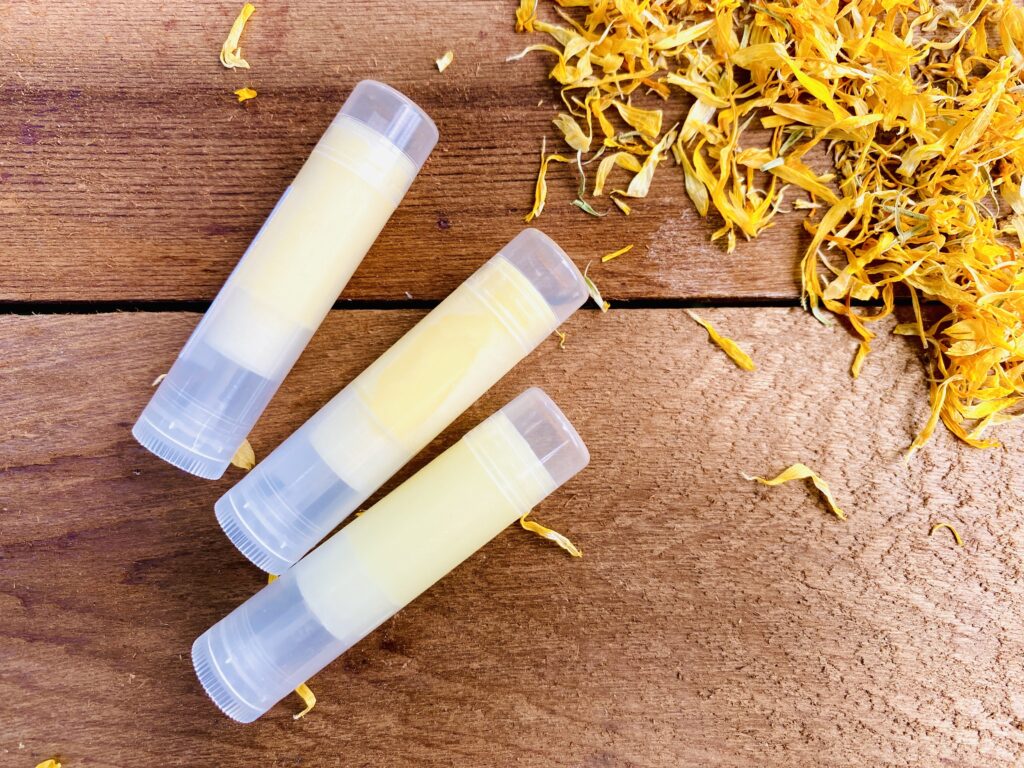

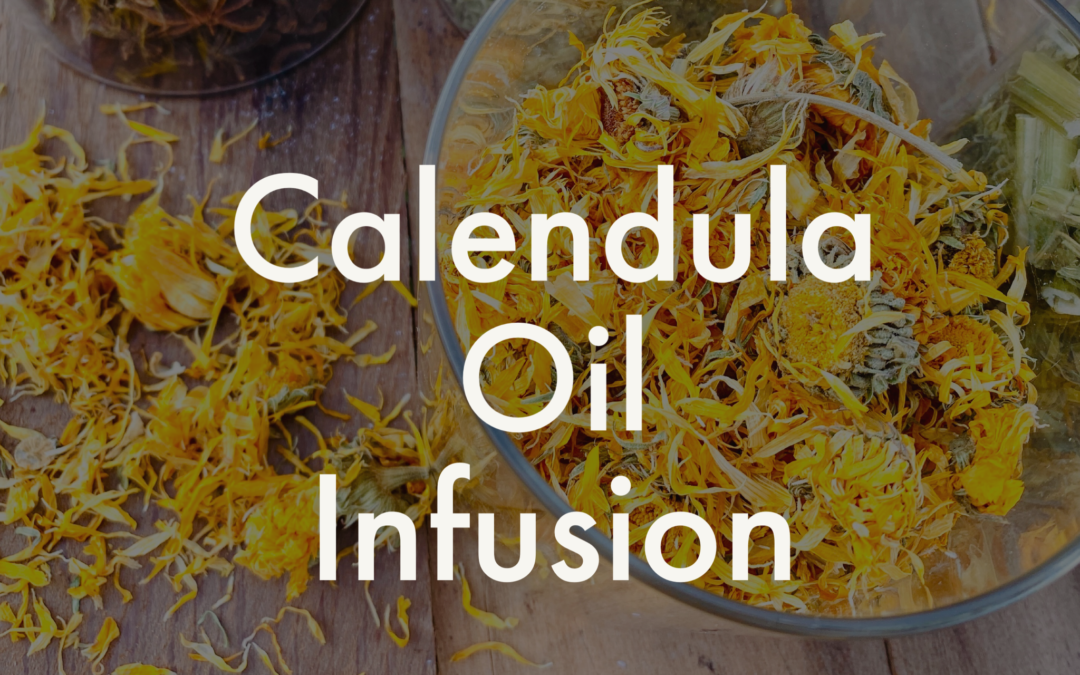
A different way to (hot) infuse the herbs is to use a sous vide machine. This keeps the temps constant and no need to keep an eye on it. Set the temp, wait for it to come up to temp, set a timer for 2-3 hours or however long you wish to infuse the herbs. Easy!
This post really helped me, thank you!! I’m making my infusion tonight bc I need it, as Robyn says, STAT!
Brilliant idea! I’m going to try that!